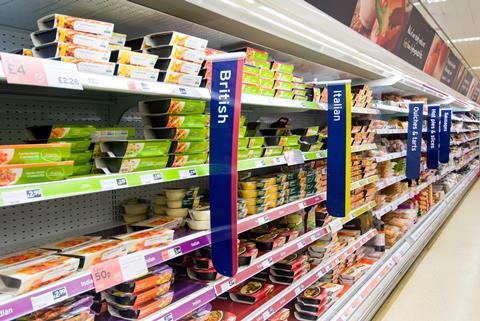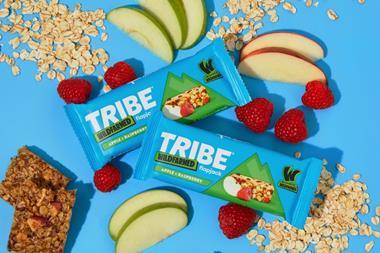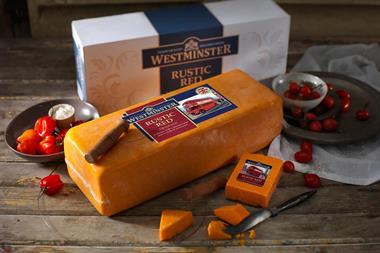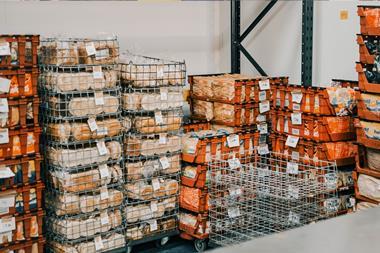As the cost of living crisis intensifies, suppliers are increasingly reformulating their products to contain cheaper ingredients. However, the tactic risks pushing away loyal shoppers
Willy Wonka was never short of a challenge at his famous chocolate factory. How to create the Everlasting Gobstopper? How to transmit a chocolate bar through television? How to keep his recipes out the hands of arch-rival Slugworth?
Beyond children’s books, the challenges of food production are admittedly less dramatic. But that’s not to say they’re any less serious. And these days, they are heavily influenced by the cost of living crisis.
While Wonka was in desperate search of perfection, manufacturers in the real world are testing out ever more innovative ways of cutting costs as food inflation hits a 40-year high.
Rather than raising prices or adopting shrinkflation tactics, they are hoping to keep both pack sizes and prices stable by making clever, cost-saving tweaks to the recipes of their lineup. The aim is to keep customers on side with changes that go under radar and make little difference to taste.
Reducing the most expensive ingredient is one of the most common ways to cut recipe costs. Meat is a common target, given prices now rising at an annual rate of 21.5%, according to ONS data.
A case in point is Heck, which reduced the meat content in its range of chicken sausages from 85% to 75% in March, according to Assosia data analysed by The Grocer. The data shows Tesco too has gone down a similar cost-saving route, reducing the beef content of its own-label cottage pie from 22% to 19% on 25 October.
In processed meat like sausages and burgers, as well as ready meals and pizzas, it can be an effective tactic. Reducing meat content in these products often has little impact on taste, and can offer a substantial saving. Although it can’t entirely save suppliers from the ravages of inflation – Heck’s chicken sausages went up from £3 to £3.20 in Sainsbury’s in the month of its reformulation – it can stop price rises hitting an eye-watering level.
In many cases, it’s not technically challenging, either. Costs are typically cut by injecting the meat with water, says Karl Imiruaye, a food technologist and founder of Pi Food Projects. This way, “you’ve still got the visual chicken in there”, but the overall meat content is cut.
It’s a method adopted by Asda in its carbonara pasta bake ready meal, Assosia data suggests. In January, it cut the bacon’s pork content from 97% to 91%.

Chocolate and yoghurt
A similarly easy fix is available to chocolate brands, for whom cocoa tends to be the highest input cost.
While cocoa prices have fallen 8.5% in the past 12 months to $2,254 per tonne, it is still about four times the price of sugar on the current spot market.
As a result, cheaper chocolate brands tend to contain less cocoa than more premium brands like Hotel Chocolat, which prides itself on high cocoa content.
But given many mainstream brands are already working from a fairly low base, cutting cocoa any further can be to the detriment of taste.
So the likes of Mars are choosing to play with other ingredients in their recipes. It has reduced the amount of whey powder in its Galaxy Ripple in favour of skimmed milk powder.
“Challenger brands in particular often end up working with manufacturers that aren’t quite right, or they haven’t negotiated good terms”
A similarly delicate balancing act is at play across cost-conscious dairy players. Some have tweaked their recipes to contain less fruit and milk and added more bulking ingredients like sugar and starch.
Bonne Maman, for example, brought down the yoghurt content of its fruit-layered yoghurts from 70% to 65% in April, while Strings & Things introduced more starch to replace some of the cream and strawberry purée in its Yollies Strawberry Yogurt Lollies.
There are obvious benefits to such cost-cutting measures at a time of soaring inflation. But there are also risks, warns Gareth Turner, Weetabix’s former head of marketing and now a director at Big Black Door. That’s particularly true of well-established products with a loyal following.
“There’s the possibility your existing consumers won’t like the reformulated product and will stop buying it,” he explains. “This risk needs to be factored into the thinking when you’re considering any reformulation – how many shoppers would you need to lose to negate any upside? If the number is low, it’s probably not a risk worth taking.”
Sally Hookham, MD at the product development specialists The Food Business, takes a similar view. “The reason that we’re consumers and we continue to go back and buy these products is that we like what we buy,” she says, explaining that these cost-saving changes are often made “to the detriment of a recipe”.
For that reason, Hookham believes it’s not a sustainable tactic. By cutting costs this way, manufacturers are “not proactive at all, they are reactive. And in being too reactive you ruin a product.”
So instead of making changes to existing lines, she recommends creating entirely new budget-friendly products to cater for the cost of living squeeze. And if possible, these should satisfy the evolving demands of supermarkets and shoppers on health as well as price.
That may sound implausible, but it can be done. Hookham points to the cake category, where suppliers have launched treats sweetened with inexpensive root vegetables in response to HFSS regulations.
Take Soreen’s Fruit & Veg-Mmms, which launched in May 2021. The treats contain 40% fruit & veg, such as beetroot and carrot. These ingredients work to provide a hint of sweetness, while allowing Soreen to claim a 50% lower sugar content than its rivals. “That beetroot is in there for a reason. It’s cutting down the sugar and providing a natural sweetness,” says Hookham.
Development chef and author Hari Ghotra also suggests ways cheaper ingredients can be seen as a plus, rather than a simply cost-cutting measure.
She points to the potential of using “waste” to create new products cheaply and sustainably, citing the rise of aquafaba (chickpea water) as an egg replacement in vegan baking products.
“There’s the possibility that your existing consumers won’t like the reformulated product and will stop buying it”
And when it comes to veg, “peelings and bits and pieces like that can be utilised to bolster up proteins and make things go further,” she adds.
Today’s consumers are more open to new ideas and innovations and are less likely to be put off by the inclusion of unusual ingredients, Ghotra argues. Plus, innovations built on these premises are likely to have broad appeal, as sustainability and food waste are “key topics” right now.
As she sums up: “How brands spin it can be really motivating if it becomes part of their story.
And if brands don’t want to tweak recipes, another way to cut costs is by closely examining their relationships with suppliers and retailers.
In many cases, ingredients are sourced inefficiently, according to Louis Bedwell, CEO of startup consultancy Mission Ventures. Challenger brands in particular often “end up working with manufacturers that aren’t quite right, or they haven’t negotiated good terms or they’re not procuring ingredients in the right way”, he argues.
Similarly when it comes to supermarkets, the relationship dynamics are often laden with inefficiencies for manufacturers. “Historically, if a factory was supplying multiple retailers, then you would have four different types of tomato in the business,” says Johnny Bingham, co-founder of food innovation and branding consultancy Bingham & Jones.
However, if they’re able to “utilise the same ingredients across multiple SKUs and multiple retailers then, that ingredient is now a cheaper ingredient”.
It might not be a Wonka-esque innovation, but it could prove an equally effective tactic.
Wonka or Plonka? The risks of cost-saving food reformulation
- 1
 Currently reading
Currently readingWonka or Plonka? The risks of cost-saving food reformulation
- 2



![XOXO-Product-Shot[ALL FLAVOUR]-Sky-1920x1080](https://dmrqkbkq8el9i.cloudfront.net/Pictures/274x183/4/9/2/355492_xoxoproductshotallflavoursky1920x1080_806584_crop.jpg)

















No comments yet